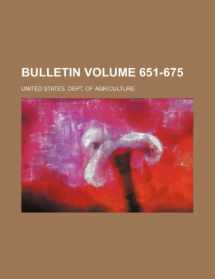
Bulletin Volume 651-675
ISBN-13:
9781236440228
ISBN-10:
1236440226
Author:
United States Department of Agriculture, United States Dept of Agriculture, United States Department
Publication date:
2012
Publisher:
RareBooksClub.com
Format:
Paperback
394 pages
FREE US shipping
Book details
ISBN-13:
9781236440228
ISBN-10:
1236440226
Author:
United States Department of Agriculture, United States Dept of Agriculture, United States Department
Publication date:
2012
Publisher:
RareBooksClub.com
Format:
Paperback
394 pages
Summary
Bulletin Volume 651-675 (ISBN-13: 9781236440228 and ISBN-10: 1236440226), written by authors
United States Department of Agriculture, United States Dept of Agriculture, United States Department, was published by RareBooksClub.com in 2012.
With an overall rating of 3.7 stars, it's a notable title among other
books. You can easily purchase or rent Bulletin Volume 651-675 (Paperback) from BooksRun,
along with many other new and used
books
and textbooks.
And, if you're looking to sell your copy, our current buyback offer is $0.44.
Description
This historic book may have numerous typos and missing text. Purchasers can download a free scanned copy of the original book (without typos) from the publisher. Not indexed. Not illustrated. 1920 Excerpt: ...no protection to the eggs. A wet floor is generally caused by faulty bunkers or clogged drains, due to dirt from the ice, or failure to remove the slime from the bunker. Observations made during one season showed that 38 per cent of all the egg cars examined were more or less damaged by water. Much, if not all, of this damage can be prevented by washing the ice more carefully befor it is placed in the bunkers, especially where natural ice, which has been packed in sawdust, is used. Too often the so-called washing merely pushes the sawdust around to the lower side of the cake of ice, so that it eventually enters the bunker. CONDITIONS AT THE TERMINAL. The 3!) terminals at which shipments were received and observations made included freight houses on Manhattan Island, station piers,1 to which the cars had been transferred by ferry, private warehouses, and the railroad yards of Philadelphia, Boston, and other cities east of Buffalo and Pittsburgh. A freight train upon arrival at destination is broken up into groups or strings of cars, which are shunted and shifted by yard engines in classifying them for delivery to the receivers. The receiving freight yard is usually a large one, and is generally located at some distance from the actual unloading terminus. The cars may have to pass through minor yards before they reach their proper station. The delivery is made at one of four receiving locations, namely, a freight house, a freight yard, a station pier, or a private warehouse or siding. A brief description of each form of terminal follows, and the general method of handling is indicated. Freight houses are usually located near the poinf of commercial activity. They serve the purpose of inbound and outbound freight. Some have separate tracks and platforms for ea...


We would LOVE it if you could help us and other readers by reviewing the book
Book review

Congratulations! We have received your book review.
{user}
{createdAt}
by {truncated_author}


